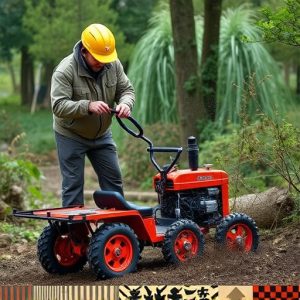Kubotan vs Pocket Stick: A Comprehensive Guide to Their Uses
The Kubotan, a compact self-defense keychain, provides users with an accessible tool for personal sa…….
The Kubotan, a compact self-defense keychain, provides users with an accessible tool for personal safety, utilizing pressure points for temporary incapacitation. Its design and material make it easy to carry and learn to use, with a simple grip and swing motion. In contrast, the Pocket Stick focuses on mobility, teaching users to create distance during dangerous situations rather than targeting specific body areas. Learning how to use a Kubotan involves securing the tool, identifying target zones, positioning oneself, and swiftly aiming for precise strikes as a last resort.
“Uncover the world of self-defense tools with our in-depth comparison between the Kubotan and Pocket Stick. These compact, yet powerful devices are gaining popularity for their versatility.
‘What is a Kubotan?’ explores the origins and unique features of this Japanese self-defense tool. We then delve into ‘Understanding the Pocket Stick’ to highlight its distinctions. But the real action begins with our ‘Step-by-Step Guide: How to Use a Kubotan,’ equipping you with practical knowledge.
Learn how these tools can empower you with confidence and discover the techniques to maximize their potential.”
What is a Kubotan?
A Kubotan, short for “keychain baton,” is a compact self-defense tool designed to look like a typical keychain. Its versatile design makes it a popular choice for personal safety, especially for individuals who prefer a discreet yet effective defense mechanism. This handy device combines the functionality of a key chain with a hidden weapon, allowing users to carry it easily in their pockets or attach it to their keys.
The Kubotan is typically made of durable materials like metal or high-quality plastic, ensuring its strength and longevity. Its unique shape features a series of small protrusions or prongs that can be used for various self-defense techniques. By applying pressure and using the tool in specific ways, users can defend themselves against potential attackers, making it an accessible option for those interested in learning simple yet effective self-defense methods, including how to use a kubotan.
Understanding the Pocket Stick and its Differences
The Pocket Stick, also known as a self-defense stick or personal alarm, is a compact and versatile tool designed for personal safety. Unlike traditional weapons, it’s legal in many places and easy to carry, often resembling a simple walking cane or baton. Its flexibility lies in its ability to be used both as a support aid for mobility and as a defense mechanism. When deployed, the stick can act as a physical barrier against potential threats, allowing users to create distance from dangerous situations.
When comparing it to a Kubotan, another self-defense tool, key differences emerge. While both serve similar purposes, the Kubotan is typically shorter and thicker, designed for precision strikes rather than swinging motions. How to use a Kubotan involves targeting pressure points on an attacker, aiming to incapacitate them temporarily. In contrast, the Pocket Stick’s use emphasizes mobility and distance, allowing users to swiftly move away from harm’s reach.
How to Use a Kubotan: Step-by-Step Guide
Using a Kubotan involves a simple yet effective sequence of steps that can enhance your personal safety. Firstly, grip the Kubotan firmly but comfortably in your hand, ensuring the pointed end is facing away from you to prevent accidental pokes. Then, identify the target area on your opponent—eyes, nose, throat, or groin—and position yourself accordingly.
Next, swiftly extend your arm and aim for the chosen point with the Kubotan’s tip. Apply pressure by pushing down on the trigger (often a thumb-activated mechanism), delivering a sharp, sudden thrust to disrupt balance and cause pain. Remember, the key is precision and speed; use it responsibly and only as a last resort.


